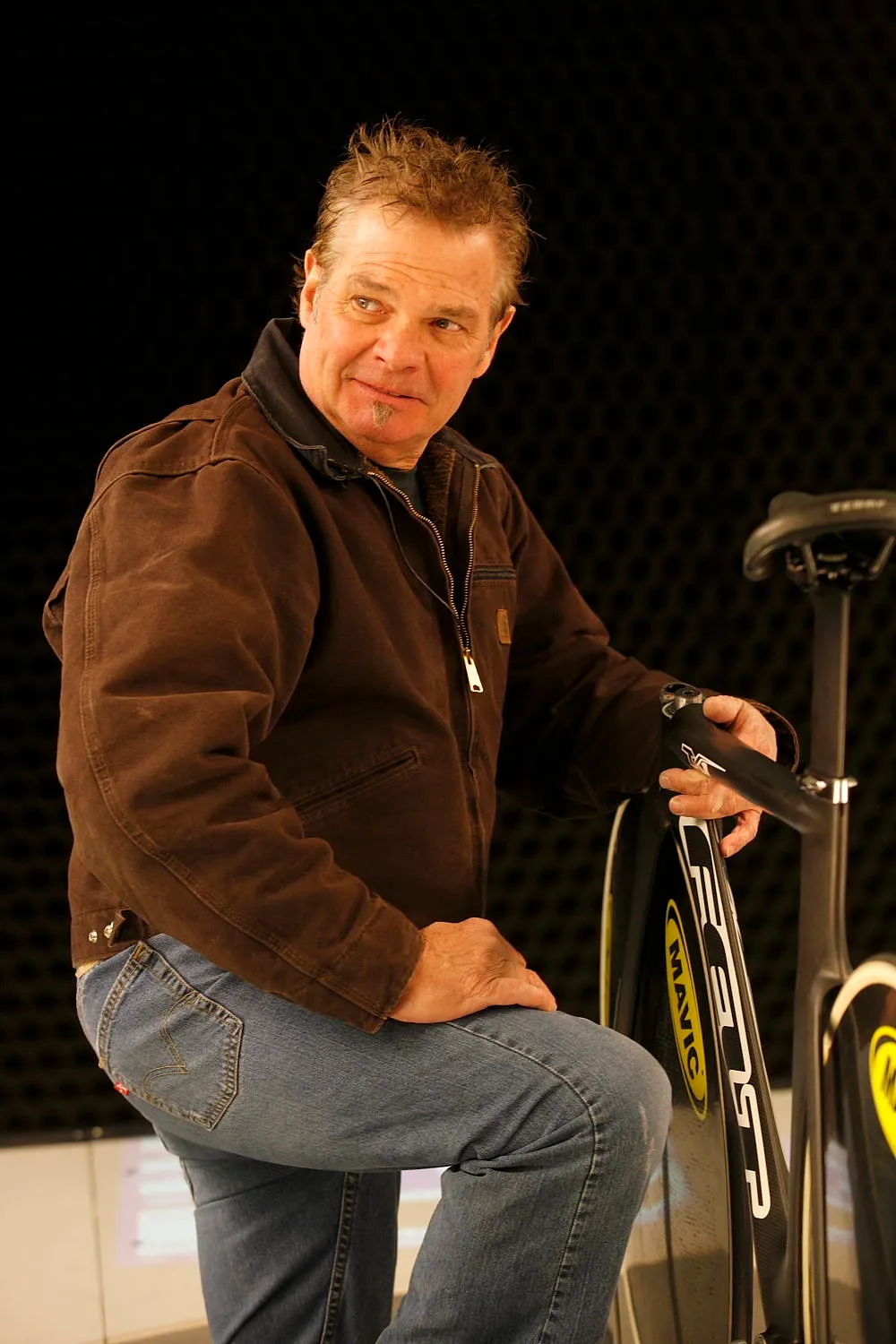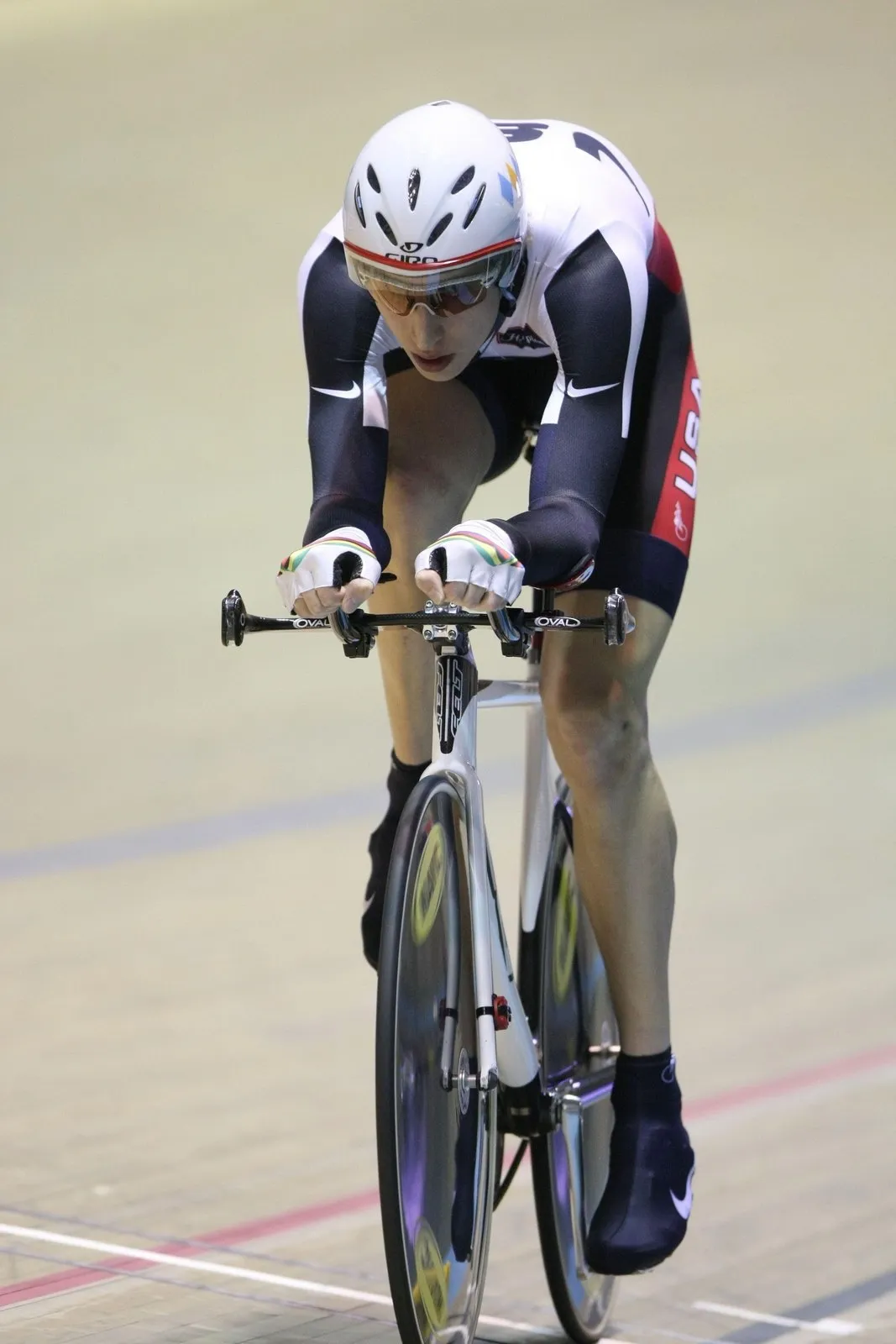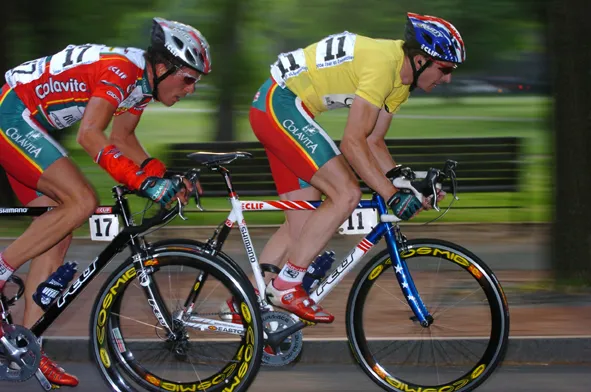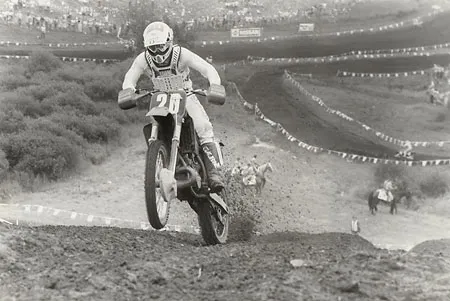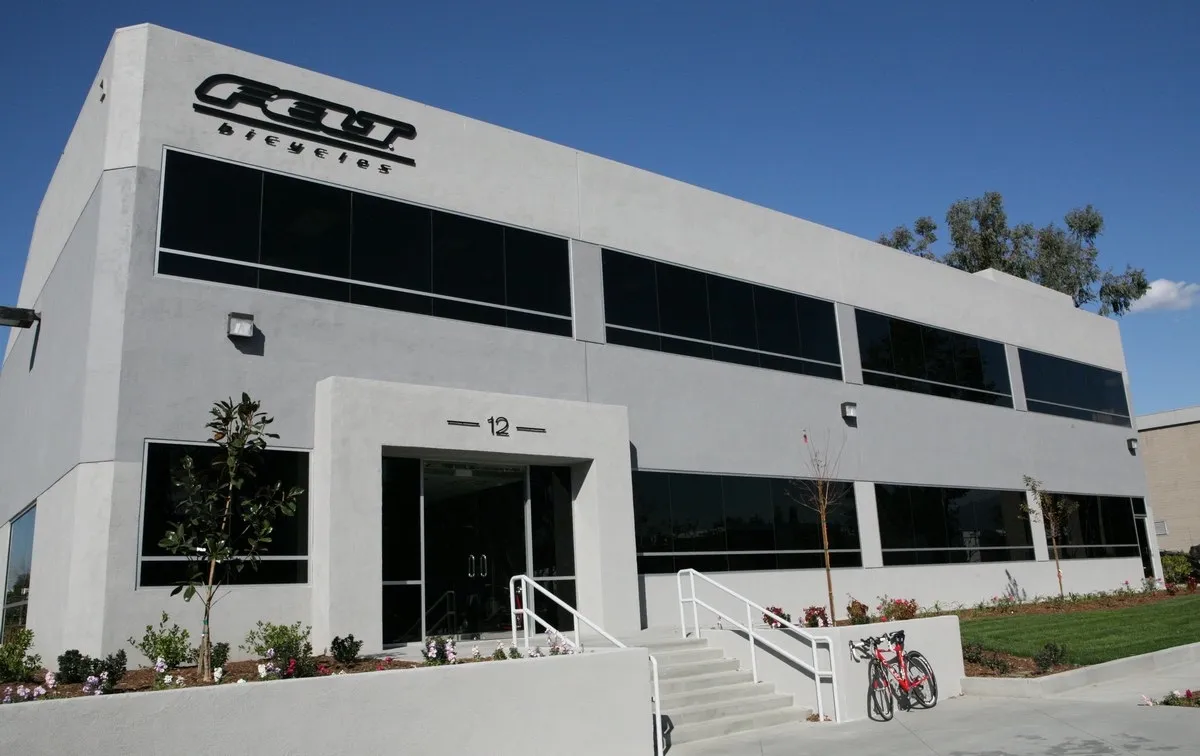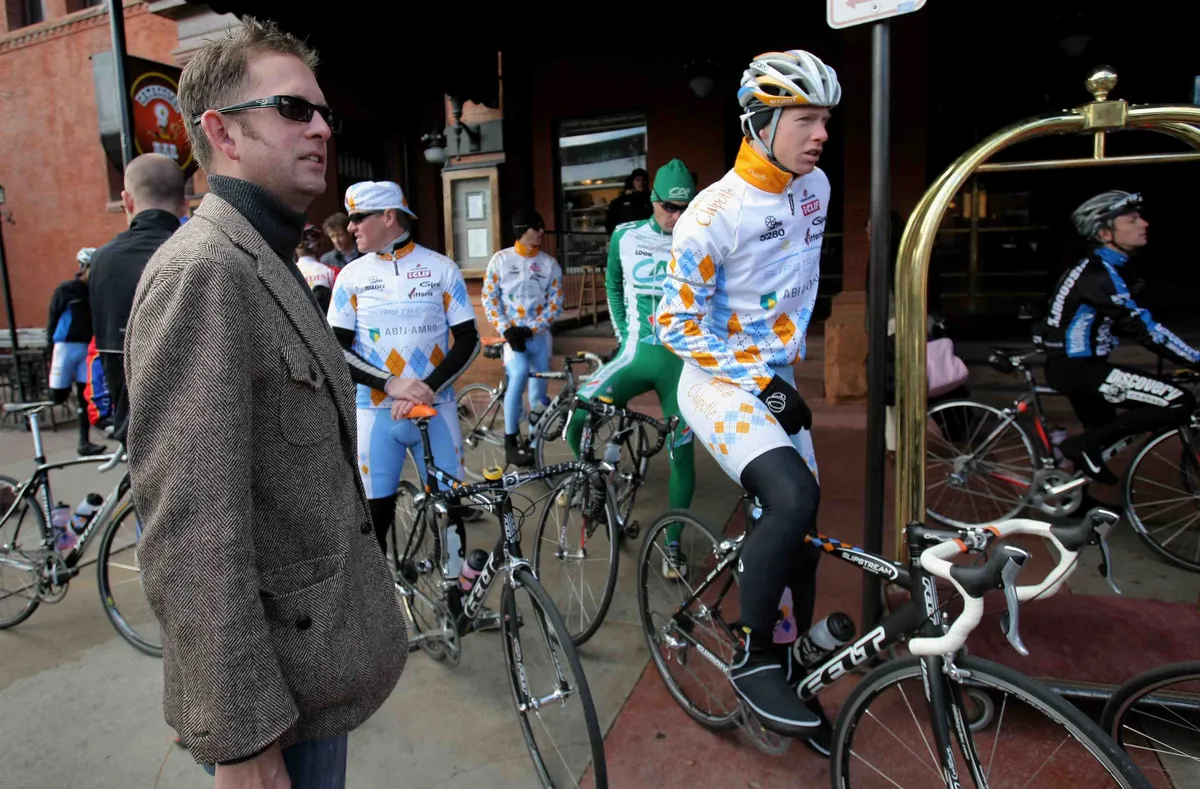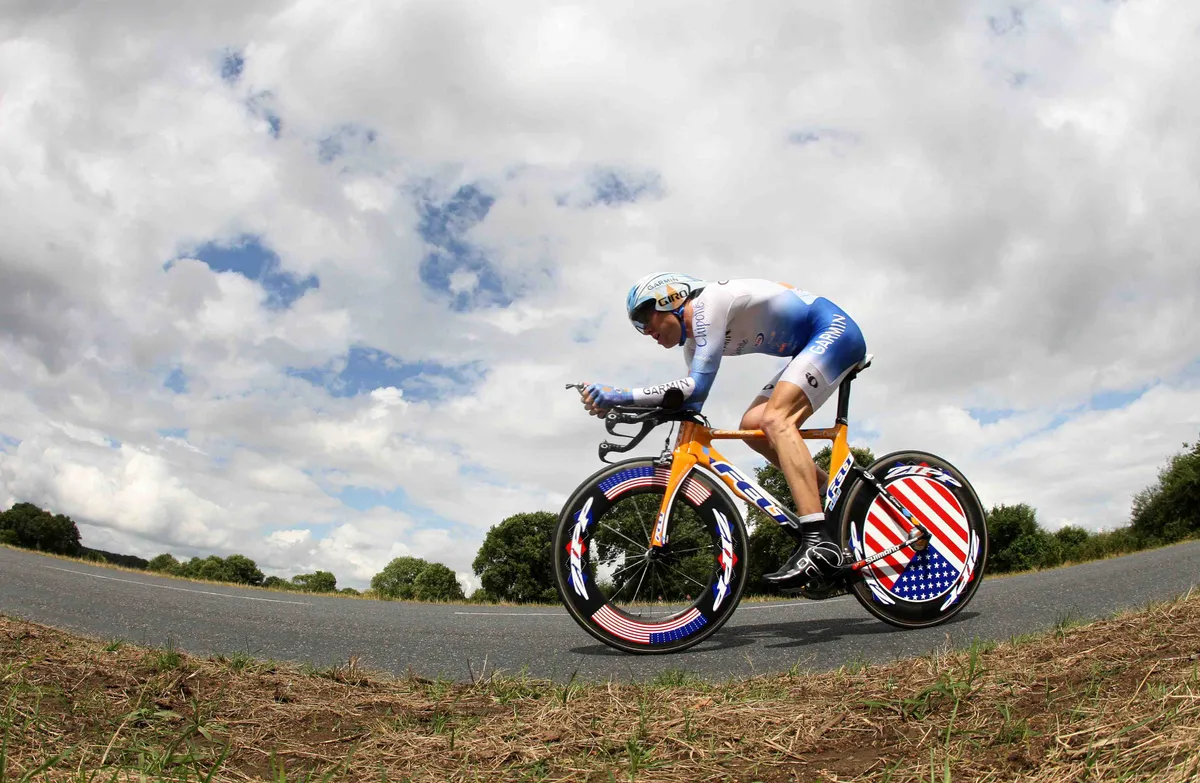American frame maker Jim Felt has always had a need for speed, starting with his days as a professional motocross racer and mechanic, which built relationships that led to building time trial bikes for some of his motocross buddies in the late 1980s.
After retiring from the dirt circuit in the early 1990s, Felt used his engineering background to get a job at Easton Sports, where he learned more about metallurgy. When the opportunity came to build a frame for three-time Ironman winner Paula Newby Fraser, Felt unveiled his now popular matte black with stark white decals design, propelling Newby Fraser to another Ironman championship.
Felt branched out on his own in with Answer Products in 1994, then relaunched the brand with business partners Bill Duehring and Michael Müllmann in 2001, with Duehring heading up the Irvine, California headquarters and Müllmann running the Germany-based international distribution. Felt himself works out of his workshop in Auburn, California, one of the original gold mining towns with mountainous wilderness canyons and the western slope of the Sierra Nevada Range lying adjacent.
BikeRadar caught up with the 53 year-old Californian on the eve of the Beijing Olympics, where 12 Felt sponsored athletes from the US, Canada and New Zealand will be racing on the road, track and triathlon. This came on the heels of an enormously successful Tour de France debut for the Felt-sponsored Garmin-Chipotle team, which also led the Giro d'Italia after the Stage 1 team trial in May.
How on earth does such a small company get an opportunity to work with an organisation like Slipstream (the managing company behind Garmin-Chipotle)?
(Team director) Jonathan Vaughters called me four or five years ago for the 5280 junior development team after he got out of pro racing. My dream have always been to have a team in the Tour, 5280 didn't really fit the bill for that dream, obviously. A young American team, back then, wasn't how I envisioned getting into the Tour. I still believe junior development teams are the way of the future, just like I did back then. I think we're starting to see how the younger riders coming out of junior programs are now the ones doing well in the Classics and Grand Tours.
I originally had my eyes on European teams, but something always came up that either didn't fit our goals or things just fell through. A huge part of this next chapter of what's now called the Garmin-Chipotle team came a year ago when Jonathan called to say 'hey guys, we've just been invited to the Tour of California!' A year later it's the Giro and the Tour de France! No words can describe how we felt after that jump.
It's unthinkable the progress we've all made with the team. I don't think there's another bike company that could've responded as well as Felt did in such a short time. Preparations that we've made for all the key racers was a major undertaking.
It must've been a bit overwhelming when world-class guys like David Millar, Dave Zabriskie, Christian Vande Velde and Magnus Bäckstedt came on board.
It was easier than you think, delivering the bikes for Slipstream. I had meeting with those guys during the team introduction in Colorado last fall. I made it clear and simple when I met those guys. I told them, 'My goal is to make you the best bikes you've ever ridden. If something's not right we'll make it right.'
I can't begin to tell you the versions of time trial bikes we built for Millar and Bäckstedt; Maggie puts out 2,000 watts of power! This guys got a huge motor, and he doesn't need to ride the sort of bikes the general public would ride. He needs special attention!
We were very open with the whole bike design and building process with the guys. I was looking for all corrective criticism. The payback has been due to the solid communication between designers, Vaughters, Allen Lim, the riders. Our goal was making the guys faster.
How many frames do you provide them in a season?
It's close to 200 frames. I got a call in the middle of the Tour from the head team mechanic. We introduced the AR right before the Tour, and not everyone was able to get extensive time before the race began. The mechanics reported no failures during the Tour, which is a big deal for everyone.
Tell us about the timetable for developing the Felt AR road bike.
The Felt AR didn't exist until Maggie asked about his Paris-Roubaix bike. I didn't know him that well; he emailed me his stats and specs, which were off the chart! I thought, 'Wow - I don't have a bike for him - this guy could break a Mack truck in half.'
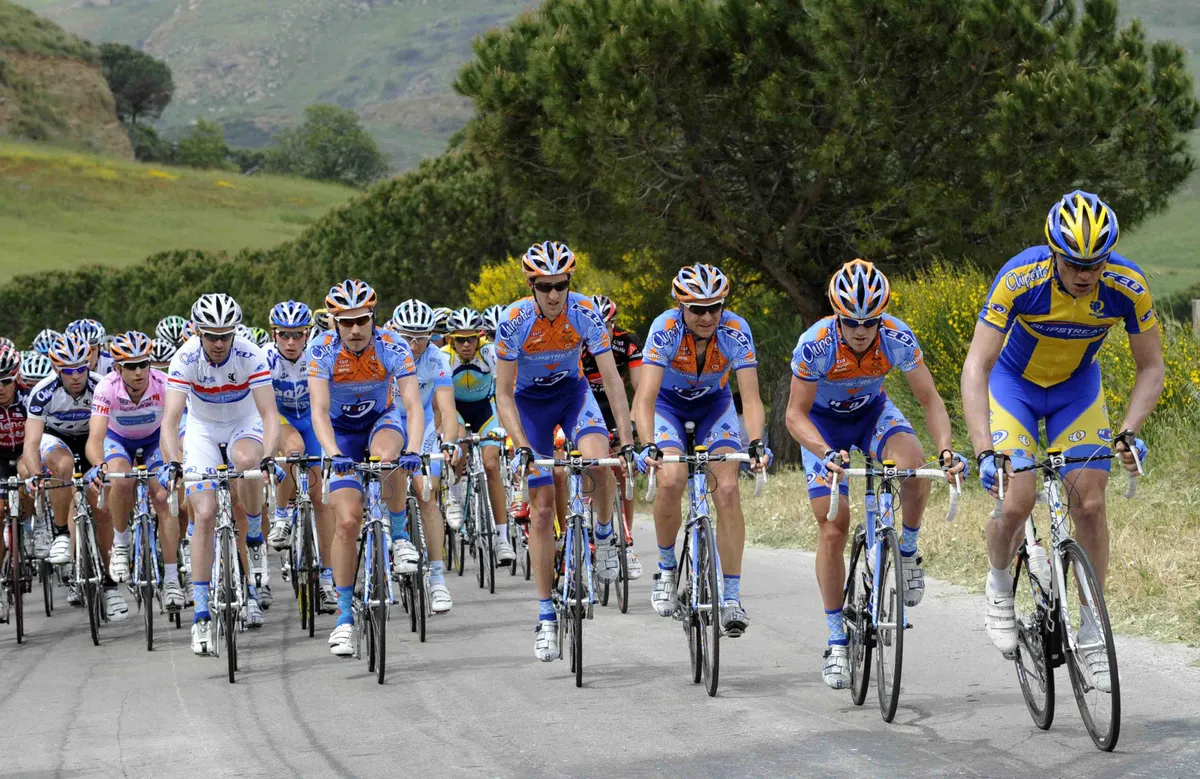
Magnus Backstedt (R) leads Team Slipstream during Stage 2 of the Giro d' Italia
So we met at Interbike and designed his bike then and there. We talked about his race history and what he wanted to accomplish in 2008. He shared an idea he had for a new bike design, mentioning his style of going off the front now and then. He asked if I thought there would be an advantage to him having a more aerodynamic road bike. Cervelo made the Soloist with the same dimensions as their R3; Maggie wanted something that would help him literally time trial the last 10km of any road race. The gears started turning in my head, so I shared the idea with our engineers immediately. I used to think roadies wanted something specific: either they're time trialling or climbing. I told our guys we needed to do it for the team.
When Vaughters and I started getting serious about Slipstream's big step in 2008, he asked for some competitive advantage in the equipment, so I felt indebted to deliver something like the AR.
A paid athlete knows what their needs are; you seem to have built confidence among the Slipstream organisation.
Everybody at Felt rides, but not at the calibre of the Slipstream boys. There's a difference between their wide-open and my wide-open. Christian and Magnus have equipment needs that are off the charts compared to someone walking into a bike shop. Pro racing is very, very hard on equipment.
Aerodynamics plays an important role for you. How much time do you spend in the wind tunnel, and how much does it cost?
Aerodynamics has always been a huge part of Felt. I don't know if we've started a new movement, but we don't do it the cheap way. The guys that are going to survive in this business are investing in wind tunnel testing in the pursuit of squeezing every last second out of the bikes. We've invested in sophisticated equipment to help us scrutinise before (outside) the wind tunnel, and are so committed to the San Diego wind tunnel because we literally own most of their booked time!
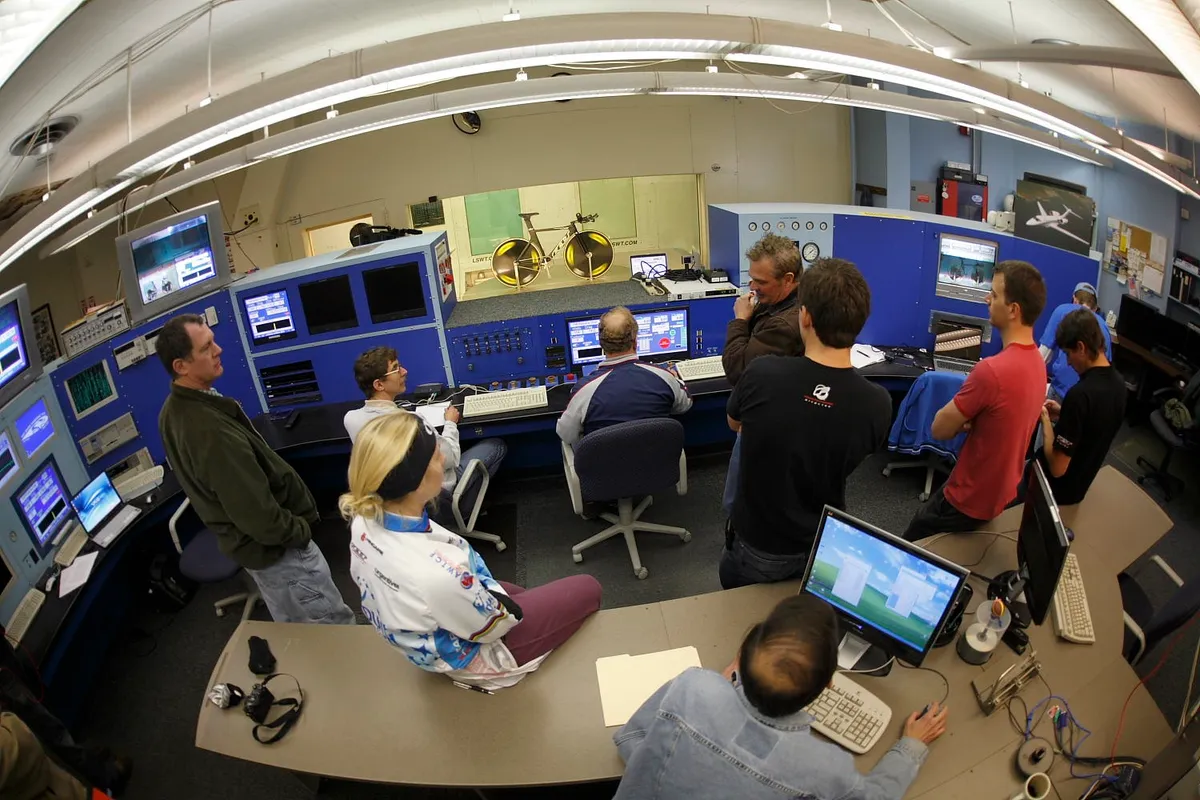
It's so easy in the bike industry to do design time trial bikes backwards: design, develop tooling, create prototypes and let the marketing guys get involved in the early stages, the enter the wind tunnel. Felt studies its competitors bikes, tested them, and before we cut a tool, we CNC plastic bikes, snap in new tube assemblies in the wind tunnel in the pursuit of getting the numbers we're looking for. Then we go back and redraw it, then start cutting tools for a mould.
You could get away with backwards engineering three to five years ago, but not anymore. You can be humbled by the numbers in the wind tunnel. Numbers don't lie! It costs nearly $1,000 an hour in the wind tunnel. We've invited companies like Shimano to share the wind tunnel time, which helps everyone.
Felt will be well represented during the Olympics. How have you prepared, having such short notice that Felt-sponsored athletes like Taylor Phinney, Ryder Hesjedal, Julian Dean, Vande Velde and Zabriskie were going?
We knew that Sarah (Hammer) and Taylor were going to Beijing earlier in the season; Zabriskie and Vande Velde only found out July 1. Five years ago, if any Felt athlete needed a bike for any event in short notice, I'd whip something up myself. Now, we were so wrapped up in Garmin-Chipotle being in the Tour that the Olympics kinda came too quickly! I couldn't get to the Tour because having to prepare bikes for our Olympic athletes; we have 12 Felt-sponsored athletes racing road, time trial, track and triathlon. It was a lot of work, and we have a great squad representing the US [Two Garmin riders, Ryder Hesjedal and Julian Dean, are representing Canada and New Zealand - ed].

World champion and Beijing athlete Sarah Hammer
There's still a lot of good racing coming up after the Olympics; for me, it's been an extremely taxing year, but in a good way. I'm glad I was able to step in and help Zabriskie after his broken back early in the Giro. He may have an advantage missing the Tour and being a bit fresher than most.
So your being the glue of the company has freed you up to take care of the athletes in short order?
There's no way I could be a CEO of this company; being able to rely on Bill and Michael to take care of the things necessary allows me to do my best for the athletes and employees. I eat, sleep and breathe racing just like Jonathan. It's hard to believe Felt has had this corporate structure only nine years, we've come a long way in that time. What a leap.
You were instrumental in developing and ushering in 7005 Easton aluminium. How did you feel when carbon fibre was knocking at the door and you knew it was time?
I was a big promoter of 7005 alloy for its user and build-friendly properties. A lot of people don't know this, but I've always been a huge carbon fan. I've been dabbling with it in the `80s and '90s, even back in the motorcycle days. But the difference between technology then and now is way different; we didn't have any right as an industry messing witch carbon back then. Thanks to aerospace, we've been given the ability to build phenomenal materials for bicycles.
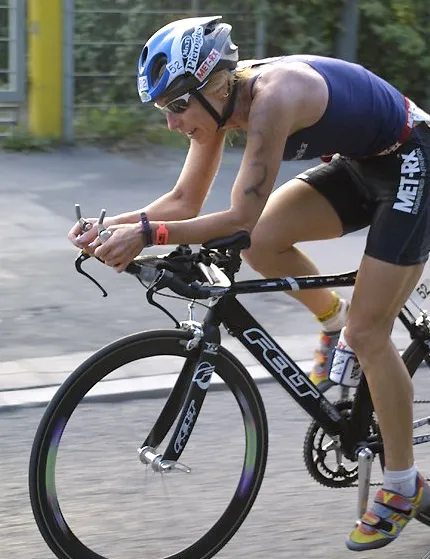
Paula Newby Fraser racing her Felt to Ironman glory in the 1990s
I'm not a 'steel is real' kind of guy; to me it's all about the materials. You have to use the right materials for the right applications when it comes to bikes and bike parts. Some materials shine, and some don't. Some shouldn't be thrown at a bicycle, period. It was great working at Easton because part of the job was working with different materials every day.
"I'm not a 'steel is real' kind of guy; to me it's all about the materials."
Having two co-company presidents in the US and Germany is rather atypical...
Bill, Michael and I get along well; we all have the same values and the same goal. Our message is exactly the same. Our personalities are completely different; Bill is the best in the world at negotiating deals from his 35 years experience in the Orient; Michael has the best business sense of all of us, and has been running a successful distribution business in Europe for several years. I bring more of the engineering expertise to the table, including the athlete relationships. It's been a perfect mix; there's not a day that goes by that we don't talk.
Today the promoter of the Tour of Utah called asking how Slipstream can get involved; Becky Lavelle, one of our star triathletes heading to Beijing, called needing some things, basically a new bike, so my days are full and fun.
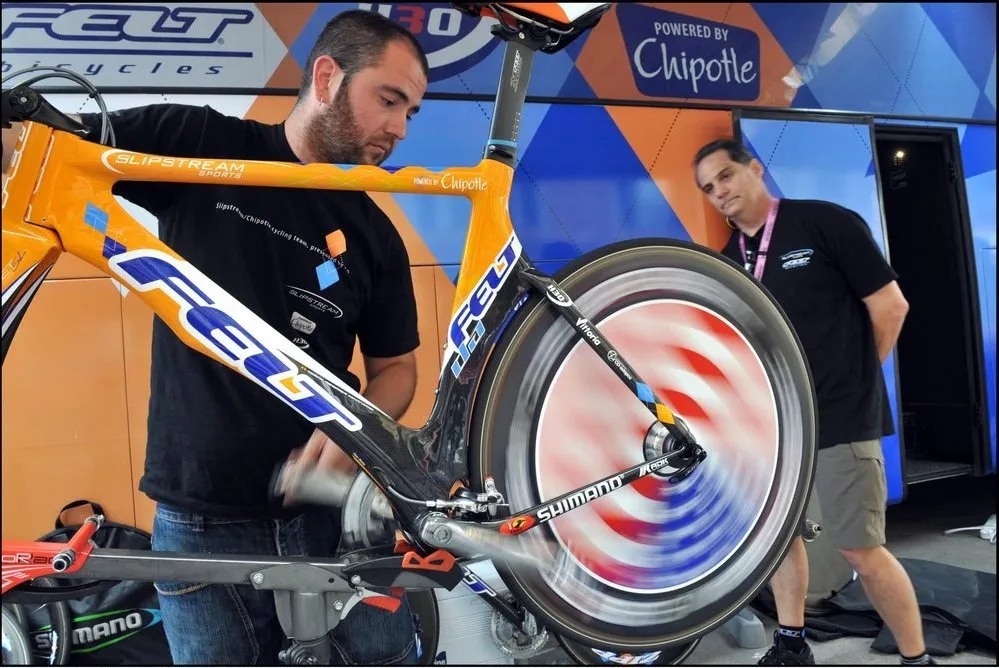
Felt president Bill Duehring (R) keeps a watchful eye during the Tour
I stay in touch with our athletes and team managers, and living in Auburn frees me up to work on new projects while the guys in Irvine are getting the other important things done. Living here keeps me focused and allows me to create the futuristic stuff. For example, right now we're working on three new bikes, probably the biggest projects Felt has ever worked on, and probably the most rewarding.
Again, Felt is small compared to the competition (approximately 25 people in the Southern California headquarters), yet Felt has numerous models in multiple categories (140 models across 27 countries). Do you ever feel the need to simplify things and refocus, or is this where you want the company to be?
We're in a happy place right now. The three of us are easily distracted, but pull each other in and refocus. We've had several projects that never made it to market because we felt it was beyond our focus. I think you see some of that at Interbike this September. We're not going to be the bike company for everybody, but what we focus on will be really good stuff.
We are probably up to 27 employees now in southern California; Specialized probably has that many in their water bottle department! I have four engineers working for me now, and those guys don't have a spare moment.


